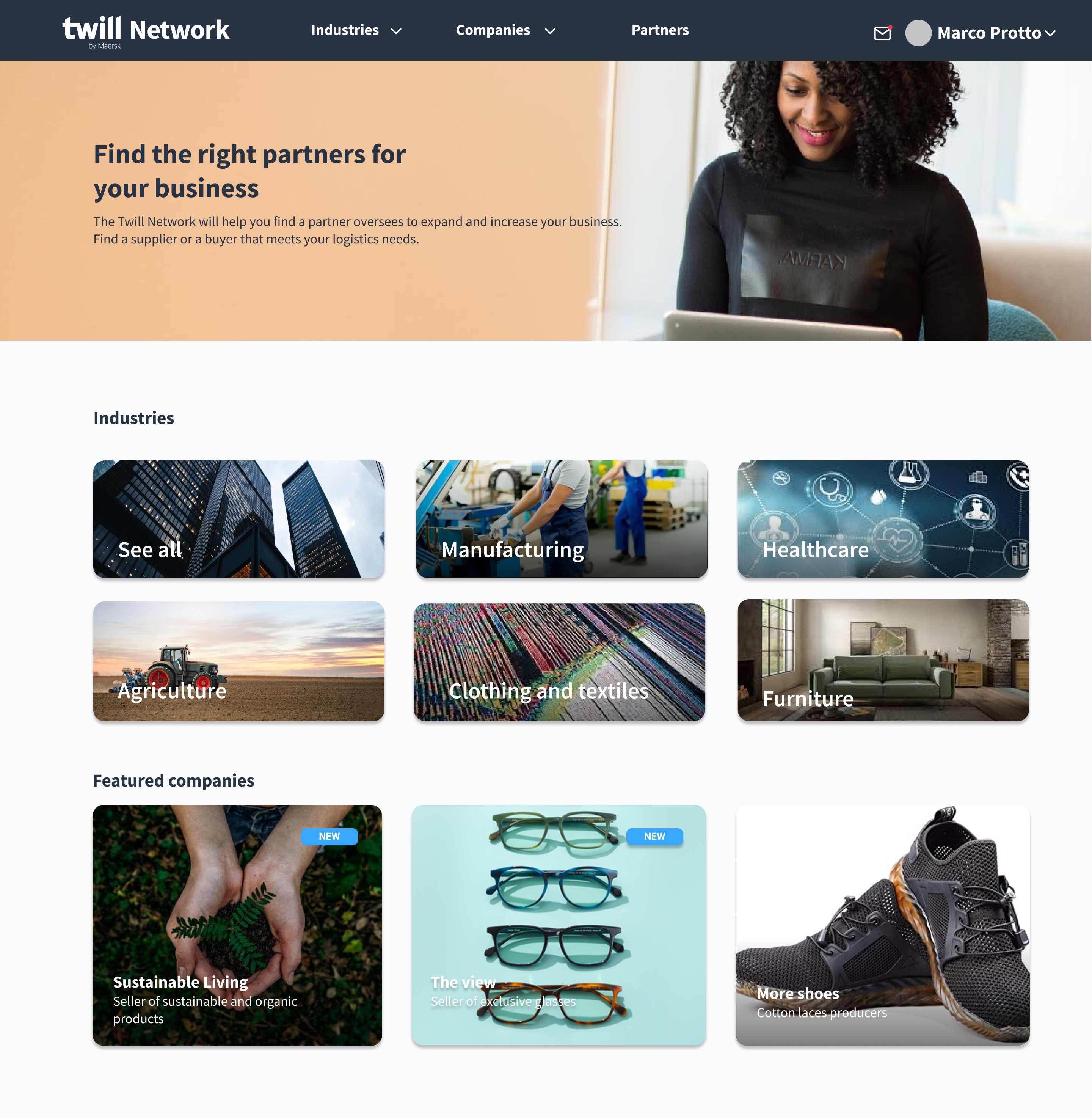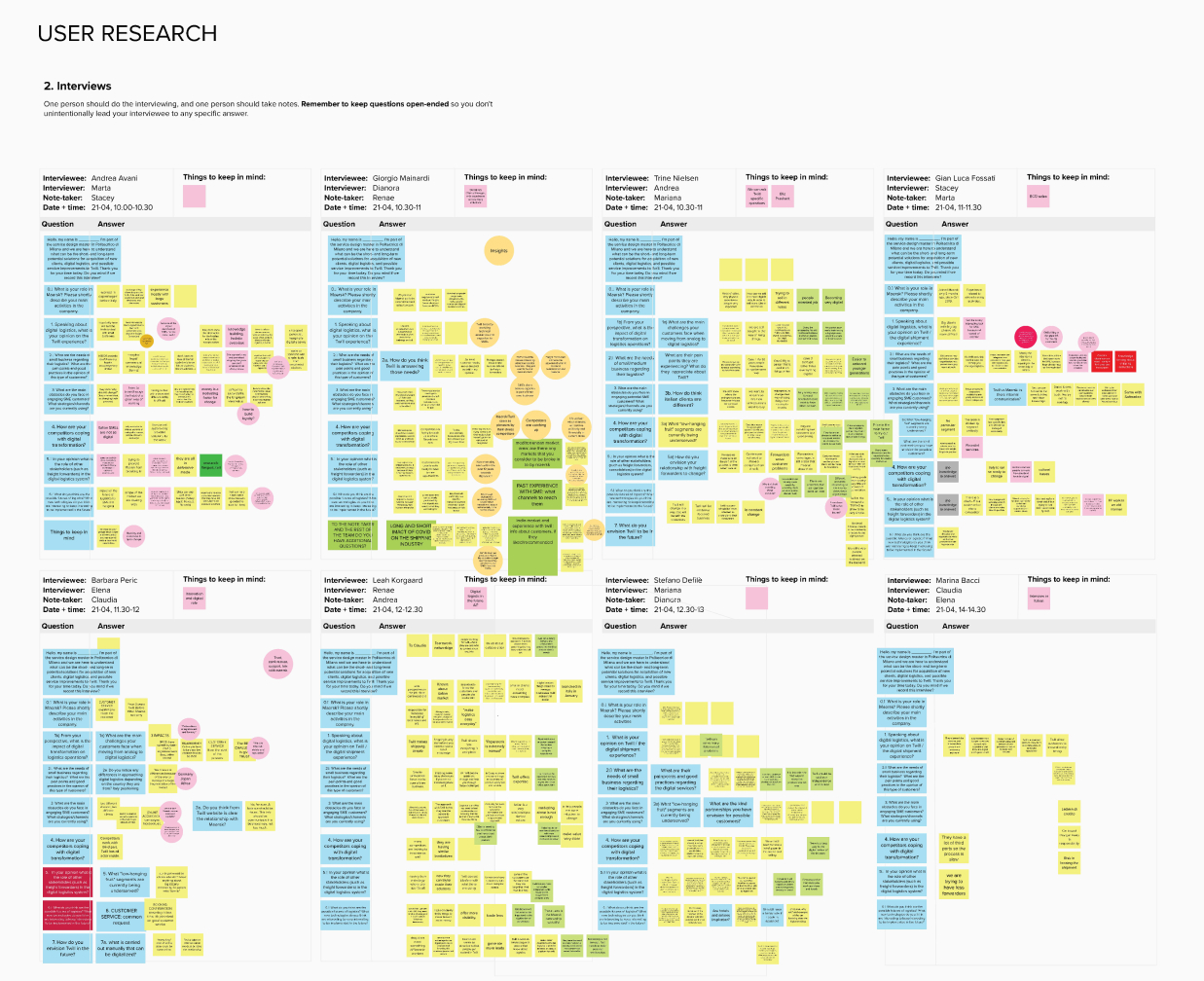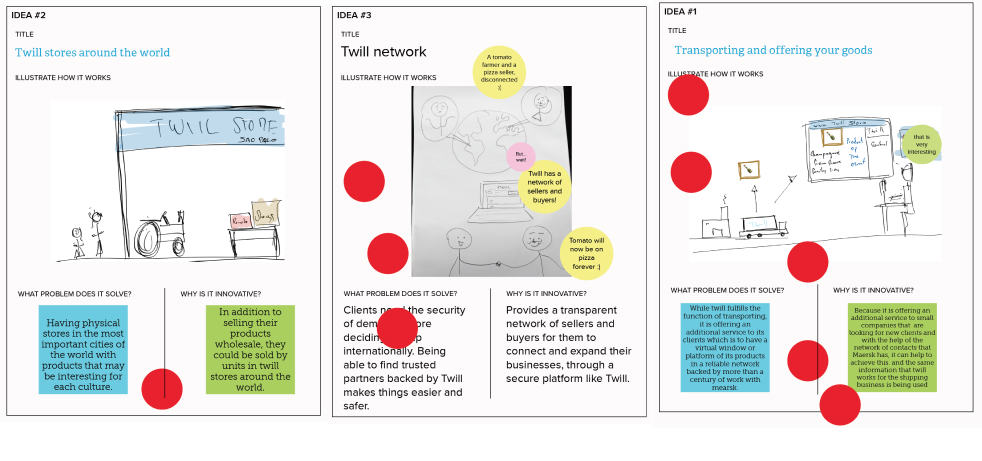
Connecting companies along the supply chain to expand logistics
Twill by Maersk
Overview
Twill is a digital freight logistics service for small and medium-sized businesses (SMEs). It provides simple logistics and allows their customers to focus on their core. With the logistics sector starting a digitalization process and the competition (freight forwarders) heavily gaining market with SMEs, Twill needed to find other ways to reach and service their clients.
Goal
Generate a long-term service concept for Twill to find a potential market base of SMEs and create a value advantage.
Outcome
Two long term service concepts were developed and presented to the Maersk team: a Network service and an API integration with e-commerce platforms.
My role
Service designer
Team Leader
Methods
Desk research, in-depth interviews, case study research, opportunity canvas, ideation, brainstorm, journey map, service offering, prototype, roadmap, ecosystem map.
Tools
Figma
Mural
Year
2020
Research
This was a two-week workshop with Twill by Maersk, organized by the Service Design Master from Politecnico di Milano. The teams were dividen in four; ours in charge of long term solutions. During the research phase we did in-depth interviews with 8 employees of the Twill and Maersk team to gather insights on customer behaviour and opportunities to approach new markets.
Research goals:
- Understand current customer behaviour and pain points
- Define the needs of small and medium businesses regarding logistics
- Find opportunities to reach potential clients
- FUnderstand digital logistics services
- Determine Twill’s standards and limitations

Notes from in-depth interviews
We did desk research to understand the trends of the digital logistics industry. We found case studies that integrate logistics with e-commerce solutions in a seamless way using technology. We found supporting data on e-commerce and identified an interesting and potential market to explore.
Opportunity areas
With this information at hand, we identified three opportunity areas to explore.
- How might we help and encourage SMEs to expand their business?
- How might we get in contact with new businesses looking to compete globally?
- How might we use technology to improve end-to-end services?
We wanted Twill to differentiate itself from other freight forwarders by helping SMEs with a topic other than logistics - but related to it - and of much interest to them: expanding their businesses. If SMEs were growing, so would their logistics needs, and therefore Twill would get more business from them.
Ideation
With these questions at hand, we started ideation with an individual brainstorming session followed by group reframing sessions. Two service ideas we selected. Both ideas were independent but benefited from each other.

Brainstorm cards with dot voting
Service concepts
After refining the ideas and a round of feedback with the Twill team we developed two service ideas.
With positive feedback from the Twill team, we detailed the solutions and how they would work. We created the journey map, service offering, the ecosystem map and storyboards to communicate the idea, and an interactive prototype to be able to show how it would work first-hand.



Some deliverables of the project: An interactive prototype, a service offering and the service ecosystem.
Key Learnings
Communication, tools and leadership:
The project started during quarantine due to the COVID emergency. Working remotely was new and challenging, but keeping a good and healthy communication with the team and using tools that enabled collaboration facilitated the process. Also, as the project leader I was responsible for leading the team in the right direction and focusing our time when it was more necessary. Having had work-experience with leading bigger teams was a useful skill for this situation.
Thinking ahead:
The Twill team was very interested in the concepts, particularly e-commerce integration. They asked many questions about the service idea, why we chose this route, how it would work, and how it would benefit all parties. I had done research on the topic, anticipated Twill’s concerns and was confident on the idea, and was able to easily answer all questions competently.